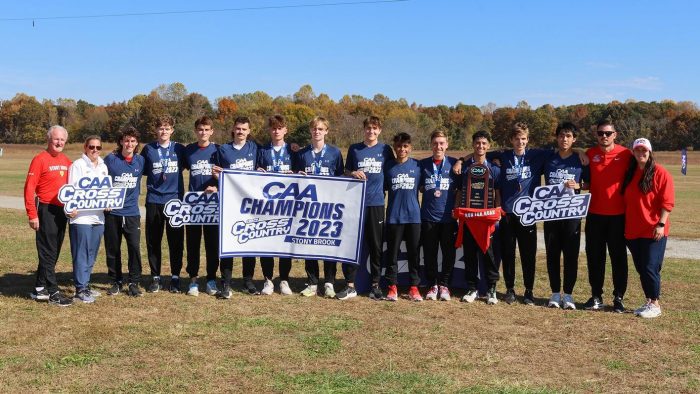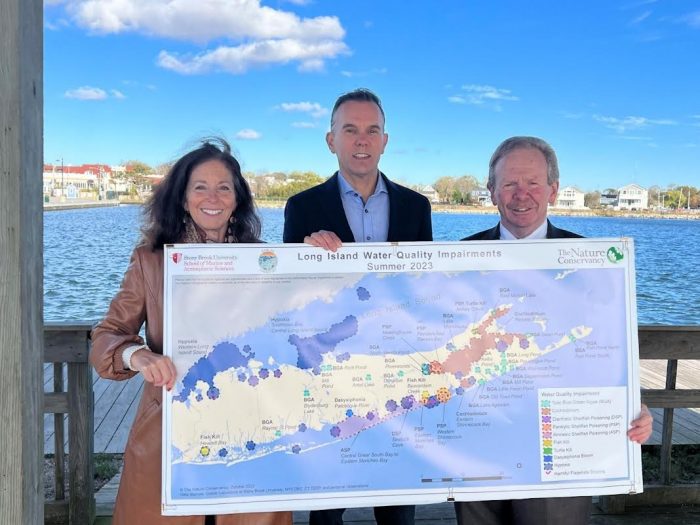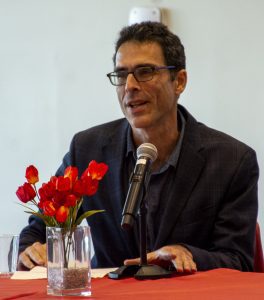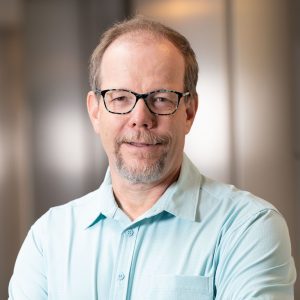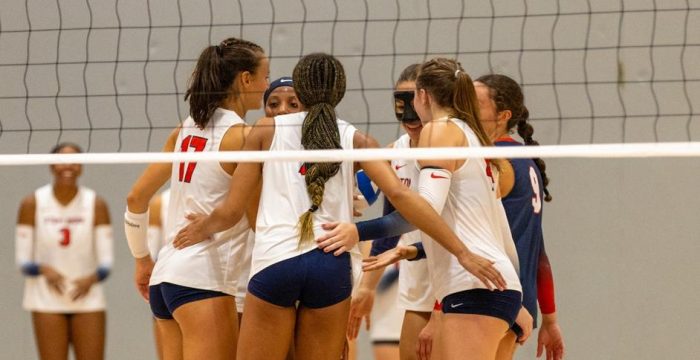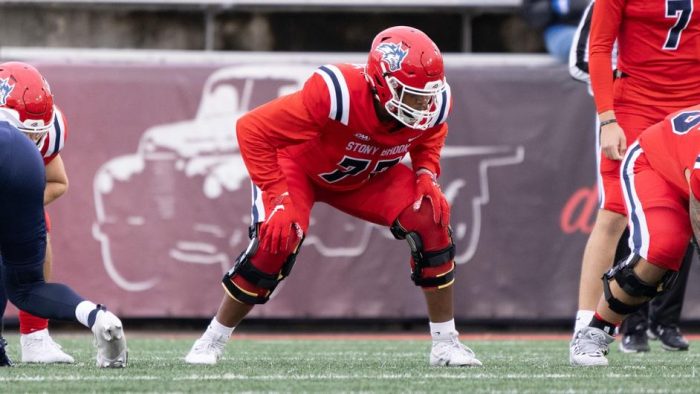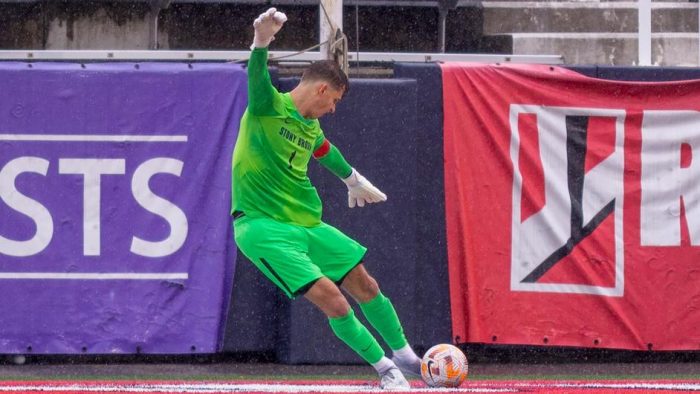The Stony Brook University men’s cross country team defended its title, winning the 2023 CAA Championship at Pole Green Park in Mechanicsville, VA on Oct. 27. Six Seawolves earned All-CAA distinction, with four of the six placing inside the top-10 of the field.
Carlos Santos was Stony Brook’s top individual performer, finishing in second place after covering the 8K course in 24:15.30. Evan Brennan completed the course in 24:31.10, grabbing sixth place. Steven Struk (24:37.10) and Collin Gilstrap (24:37.40) finished eighth and ninth, respectively, rounding out Stony Brook’s top-10 finishers. Michael Fama (11th) and Shane Henderson (12th) placed inside the top-15, joining the aforementioned performers as All-CAA performers.
Eben Bragg narrowly missed out on All-CAA distinction, finishing 16th with a time of 25:02.80. Michael Hawkes(25:39.40) finished as Stony Brook’s eighth runner inside the top-25 at the championship event. Nick Tardugno(33rd), Henry Gartner (40th), Eric Shu (41st) and John Fontanez (49th) rounded out the Seawolves’ competitors at the 2023 CAA Championship.
FINAL MEN’S SCORES
- Stony Brook, 36 points
- Northeastern, 49 points
- William & Mary, 77 points
- Monmouth, 107 points
- Hofstra, 140 points
- Elon, 162 points
- UNC Wilmington, 213 points
- Charleston, 216 points
- Campbell, 271 points
- North Carolina A&T, 274 points
- Hampton, 346 points
QUOTES FROM THE SEAWOLVES
“I thought the guys were fantastic today. They handled the pressure of being defending champions and the very warm conditions like professionals,” head coach Andy Ronan noted. “While not all of them had their their best run, they competed for each other. I’m so very proud of all 12 guys that tied the line this morning.”
“In my time at Stony Brook we’ve been through every possible situation on and off the course. We’ve been on both ends of the stick winning and losing, but seeing a talented young group of guys just show up, face adversity, running for each other is huge. After all the hard work we put in the summer, you’re working for moments like these. This moment, being back-to-back champions, running for each other, having the grit to battle it out when it gets hard. You can’t put a price on it, you can put a price on many things in life and out in the world,” Santos commented post meet. “But being a conference champion as a team and doing it for something bigger then yourself is priceless. A legacy that lives on forever, and our job is for the young guys to keep it going. I’m confident they will. They got the taste of winning and we’re always hungry for more.”
NEXT UP
The team returns to competition on Friday, November 10 for the NCAA Regional Championships at Van Cortlandt Park in the Bronx.

